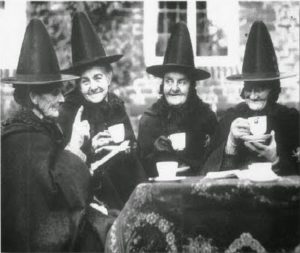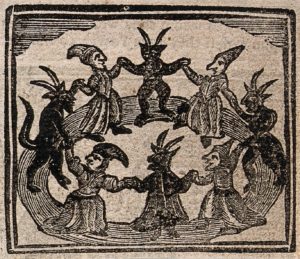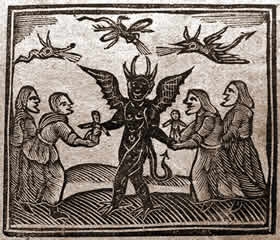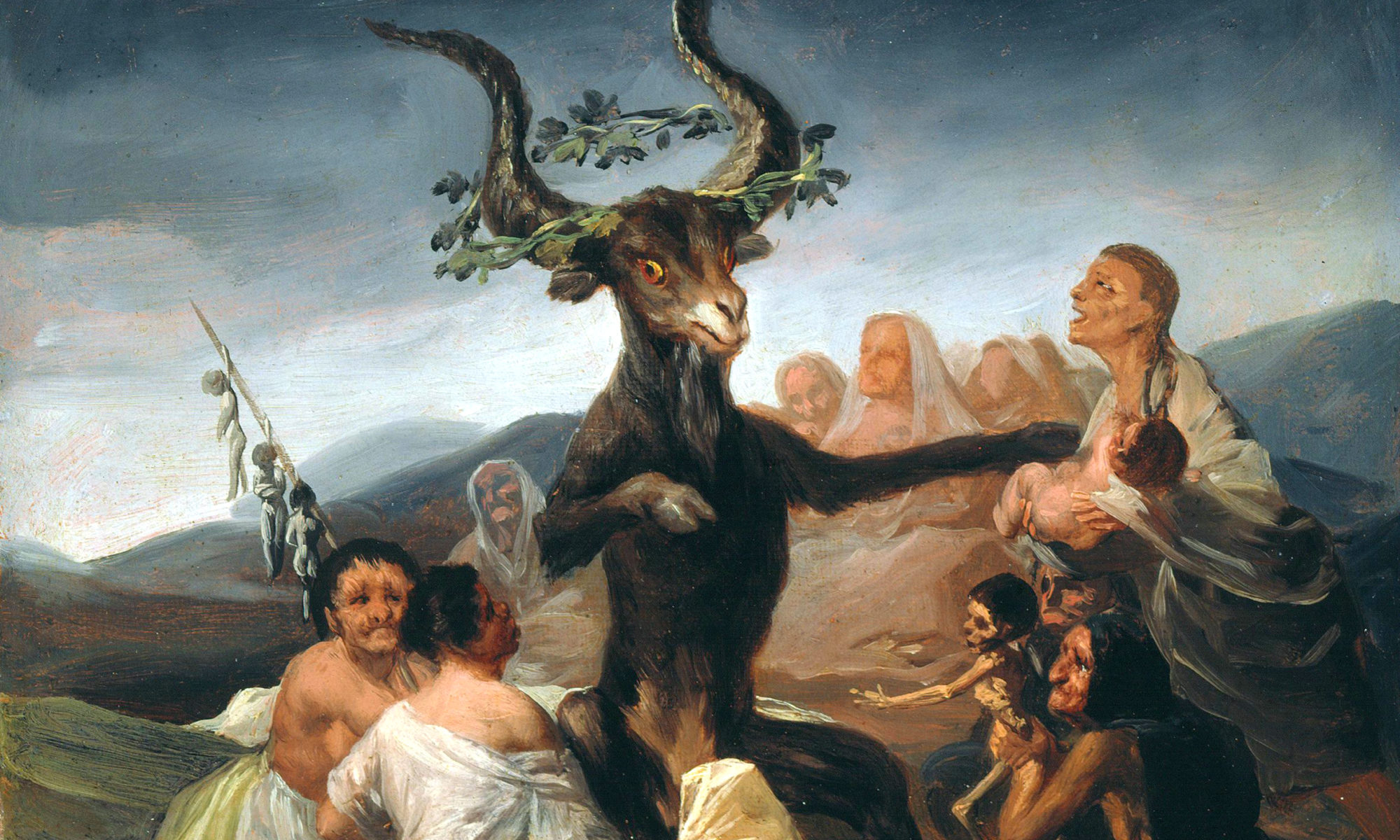Have you ever wondered why movies like Practical Magic are so popular among modern witches?
I remember the first time I saw it. I felt like I’d been given a hug. I was a lone witch in the late 90s and the Owens’ lives seemed wonderful, even with the prejudice from the townsfolk, the curse, and Jimmy Angelov’s bullshit. Such is the power of loneliness, I guess. And I was lonely back then. I was a lone witch living in the kind of place people would shout threats at me on the street for being a witch (which they’d seemingly discerned from my general vibe as opposed to me being out of the broom cupboard).
the power of loneliness, I guess. And I was lonely back then. I was a lone witch living in the kind of place people would shout threats at me on the street for being a witch (which they’d seemingly discerned from my general vibe as opposed to me being out of the broom cupboard).
When I saw the Owens’, I saw something enviable. Because Jimmy Angelov may have been an abusive dick, and they too lived around people who wished they could still get away with setting fire to people, but unlike me, the Owens’ sisters were never alone. They had people who got what it was to have the kinds of experiences we have as witches and what it is to inhabit that liminal space in relation to the rest of society. Even better though, they uplifted each other and had each other’s backs.
And if we’re being honest, that’s really rare nowadays, even within covens. But fret not, friends. Because if we’re being really really honest, family-like covens don’t seem to have been all that common historically either.
Alliances Over Bonds
One of the most endearing qualities of the Owens family is that you get the impression that they wouldn’t just fight for each other, but die for each other too. However, historically, practitioners seem to have been for the most part solitary, with their fairy familiars serving as their primary point of contact with  the fairy royalty or devilish figure to whom they are ultimately pacted (Wilby 84, 85). For the Early Modern person, it was the familiar that made the witch, but that familiar (though often appearing as a solitary figure), existed within an otherworldly or devilish hierarchy to which the witch was ultimately also bound (Wilby 125). And where witches are shown gathering together at sabbath or as a group, rather than being an event organized for convenience by humans, it is convened at the behest of that otherworldly or devilish power to whom both witch and familiar are beholden (Wilby 84). Invitations to the event itself, are commonly depicted as being conveyed by either the witch’s familiar or via animal spirits sent by the presiding power (Wilby 84). It was a time for engaging in dancing, merrymaking, learning new magic, working baneful magic, and engaging in intercourse and other deviant acts with otherworldly or devilish beings (Wilby 86). Or in other words: the sabbath showcased the kind of deviance the fairies themselves were thought to engage in.
the fairy royalty or devilish figure to whom they are ultimately pacted (Wilby 84, 85). For the Early Modern person, it was the familiar that made the witch, but that familiar (though often appearing as a solitary figure), existed within an otherworldly or devilish hierarchy to which the witch was ultimately also bound (Wilby 125). And where witches are shown gathering together at sabbath or as a group, rather than being an event organized for convenience by humans, it is convened at the behest of that otherworldly or devilish power to whom both witch and familiar are beholden (Wilby 84). Invitations to the event itself, are commonly depicted as being conveyed by either the witch’s familiar or via animal spirits sent by the presiding power (Wilby 84). It was a time for engaging in dancing, merrymaking, learning new magic, working baneful magic, and engaging in intercourse and other deviant acts with otherworldly or devilish beings (Wilby 86). Or in other words: the sabbath showcased the kind of deviance the fairies themselves were thought to engage in.
To modern practitioners, the coven is often viewed as something akin to family. But the witches’ sabbath and coven of the time of Isobel Gowdie (from whose testimony we get the first attestation of the word ‘coven’), bears little resemblance to this more modern familial imagining. Where members of modern covens center their bonds with each other, it is the otherworldly power to whom each witch (and familiar) is pledged that is at the center of any group or proceedings in the historical sources (Wilby 81). This is about the familiar rather than the familial, and rather than protecting her ‘sisters’ at any cost as an Owens would, Isobel named the members of her group in her testimony (apparently without the use of torture to loosen her lips). Which can seem quite treacherous until you consider that for her, her main loyalty was probably not to any humans at all.
whose testimony we get the first attestation of the word ‘coven’), bears little resemblance to this more modern familial imagining. Where members of modern covens center their bonds with each other, it is the otherworldly power to whom each witch (and familiar) is pledged that is at the center of any group or proceedings in the historical sources (Wilby 81). This is about the familiar rather than the familial, and rather than protecting her ‘sisters’ at any cost as an Owens would, Isobel named the members of her group in her testimony (apparently without the use of torture to loosen her lips). Which can seem quite treacherous until you consider that for her, her main loyalty was probably not to any humans at all.
Although largely under-explored (at least from what I have been able to find), the origin of the word ‘coven’ itself may also elucidate the matter further. It’s not exactly clear where Gowdie got the word from. But given the wide use of the term ‘covenant’ in Early Modern English and Scottish witchcraft accounts and legal records, it would not be unreasonable to consider there to be a relationship between ‘coven’ and ‘covenant’. If this is the case, then perhaps the word ‘coven’ would be better understood to mean ‘one who has a covenant with the otherworldly power in charge of the group or sabbath the witch attends’?
Comfort of Covens vs. Power of Other
The fiction presented by the Owens’ sisters and other such media is comforting, and I think it speaks to the part of us that always wants to belong somewhere and be around people who get us. This is a desire that is all the more keen in groups of people who exist at the edges of human society as witches do.
However, as delicious as that may be, there is also a defanging that has  occurred that I believe we need to pay attention to here. Well known fairy-firkler Morgan Daimler has written at length about the ways in which fairies have been rendered harmless in the popular imagination (the reality of fairies being another matter), and I believe a similar process has taken place with the coven and sabbath. Where fairies have gone from being figures of fear and awe to figures of whimsy and childlike innocence, I believe the coven and sabbath have shared a similar fate. Where once they were subversive, deviant fairy-led events in which learning and baneful magic took place, they have been made human-led covens and events made up of people with mostly human-led initiations who practice together in what is hoped to be a familial atmosphere.
occurred that I believe we need to pay attention to here. Well known fairy-firkler Morgan Daimler has written at length about the ways in which fairies have been rendered harmless in the popular imagination (the reality of fairies being another matter), and I believe a similar process has taken place with the coven and sabbath. Where fairies have gone from being figures of fear and awe to figures of whimsy and childlike innocence, I believe the coven and sabbath have shared a similar fate. Where once they were subversive, deviant fairy-led events in which learning and baneful magic took place, they have been made human-led covens and events made up of people with mostly human-led initiations who practice together in what is hoped to be a familial atmosphere.
Which is undeniably nice – but it’s also pretty convenient too when you think about it. Because it offers the promise of comfort in exchange for that traditional (but often lonely) connection with the otherworldly. However, it is when we witches work in partnership with the otherworldly that the witch has always been, and will always be the most glorious, subversive, and threatening.
I’m not saying to leave your covens if you’re in one, just don’t forget your primary <em>familiar</em> partnership in witchcraft along the way.
Source
Emma Wilby – Cunning Folk and Familiar Spirits

